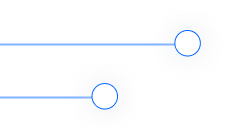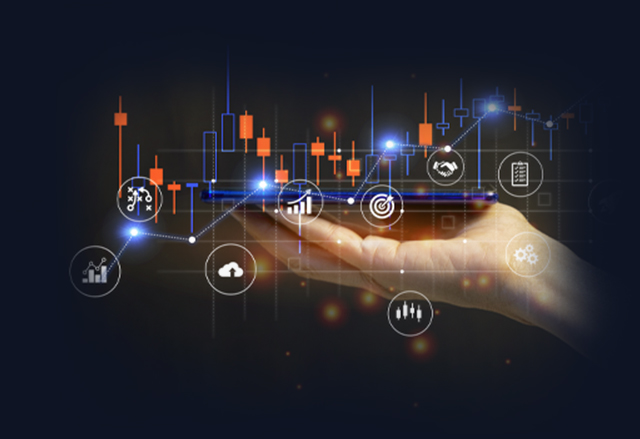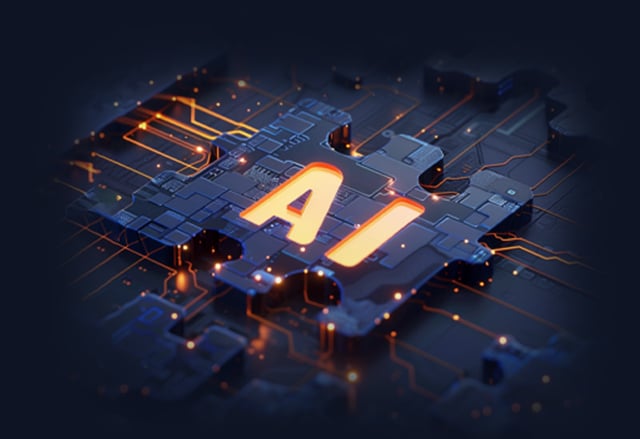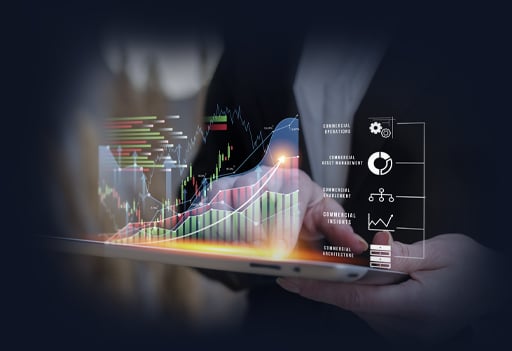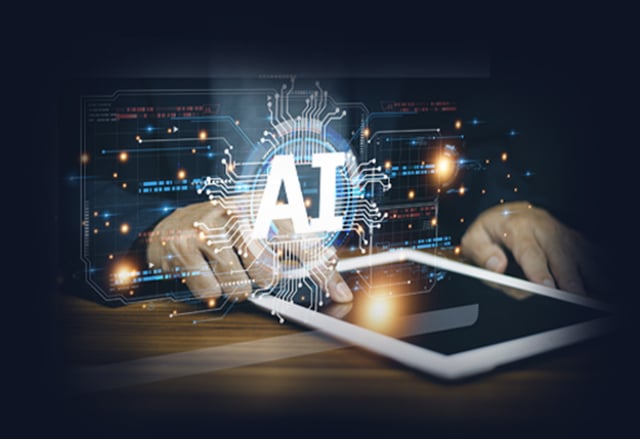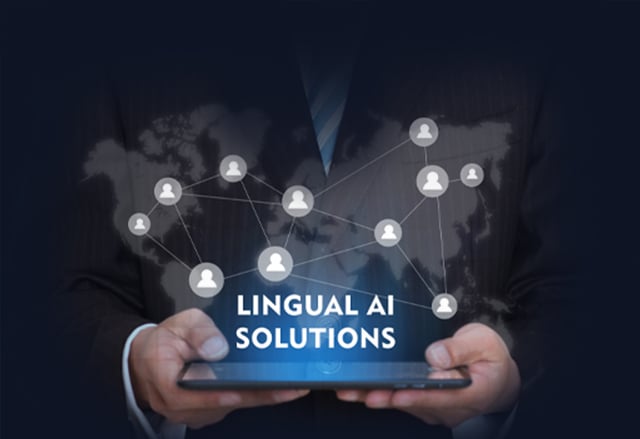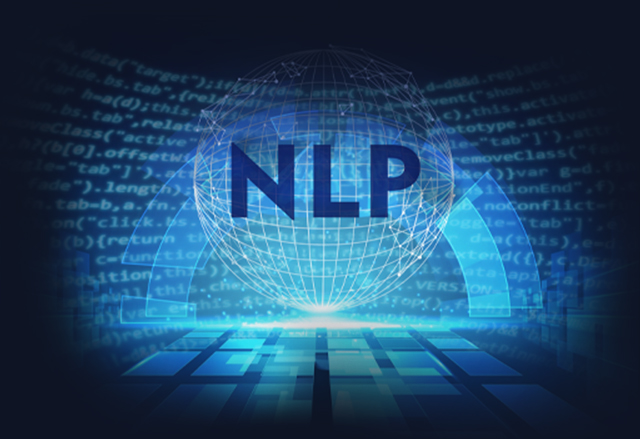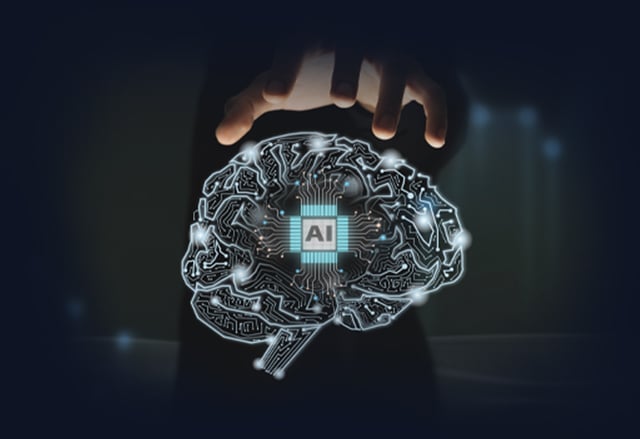Revolutionizing the Business Landscape: The Rise of Enterprise Chatbot

In today’s ever-evolving digital landscape, Enterprise Chatbots have emerged as a revolutionary tool, transforming the way businesses interact with their customers and manage internal processes.
These AI-powered entities are streamlining operations, enhancing customer service, and driving significant efficiencies across various industries. They are not just a fleeting trend but an integral part of the future of business communication.
This article delves into the world of enterprise chatbots, exploring their importance, functionality, and the immense value they bring to businesses. So, whether you're a business owner, a tech enthusiast or someone intrigued by AI advancements, read on to uncover how chatbots could be the game-changer in your enterprise strategy.
But first, let us introduce you to your future virtual assistant…
What is an Enterprise Chatbot?
An Enterprise Chatbot is the modern-day wizard of the digital realm. It is an artificial intelligence-powered virtual agent designed to interact with your business’s users and customers and automate the otherwise dire and complicated customer support process.
Enterprise chatbots are meticulously developed to address the precise requirements of businesses, ensuring seamless communication and exceptional user experience. Their intelligence and adaptability enable them to continuously learn from interactions, comprehending and responding to human language with remarkable accuracy.
It doesn't stop there; these chatbots go beyond text-based conversations and feature advanced speech recognition capabilities,
allowing them to engage in voice conversations too.
Imagine having your own personal assistant ready to help you out in any way possible every step of the way! With their dynamic nature and unwavering presence, these chatbots truly redefine the standard of interactive technology in the corporate domain.
The Main Two Chatbot Categories
Chatbots can be technically divided into two categories: Large Language Model (LLM) driven and Natural Language Processing/Understanding (NLP/NLU) driven. Both types have their unique strengths and limitations, making them suitable for different applications. The following section will delve into the technical differences between LLM-driven and NLP/NLU-driven chatbots, providing a comprehensive overview of both of these innovative technologies.
LLM-driven chatbots are based on statistical models and use patterns within text data to generate responses. They are highly effective in understanding and generating human-like text, making them ideal for tasks that require a high degree of naturalism in language.
However, their performance is heavily reliant on the quality and quantity of the input data they are trained on, limiting their versatility.
NLP/NLU-driven chatbots use machine learning algorithms to understand and respond to user inputs.
They are capable of understanding the intent behind a message, making them highly effective for tasks
that require comprehension beyond surface-level text interpretation.
However, they may struggle with complex linguistic phenomena and require extensive training and fine-tuning to perform optimally.
Both LLM and NLU/NLP are crucial in order to achieve the ultimate goal and purpose for which enterprises essentially use chatbots which is to provide accurate and trustworthy responses to their users, whomever they may be, thus streamlining seamless human-like interactions with the accuracy and efficiency of a machine at any given or needed moment.
Although LLM & NLP are two main pillars that define the infrastructure of chatbots, whether enterprise chatbots or not, there are a variety of different types of chatbots based on how we approach them and in what way they can serve us.
So, let’s touch down on that more closely!
The Different Types of Chatbots
Understanding the different types of chatbots can help businesses choose the right one to meet their needs. Here is a brief overview of the different types of chatbots:
- Menu/Button-Based Chatbots: These are the simplest type of chatbots that offer pre-defined options to users.
The user interacts with the bot by selecting options from a menu or pressing buttons.
While they are limited in terms of flexibility, they are easy to use and efficient for simple interactions. - Linguistic-Based (Rule-Based Chatbots): These chatbots operate based on a set of predefined rules.
They respond to specific commands and can handle simple queries but may struggle with complex interactions.
They are ideal for tasks with a clear structure and defined outcomes. - Keyword Recognition-Based Chatbots: These chatbots use keyword recognition and Natural Language Processing (NLP) to provide responses. They identify important keywords in the user's input and generate a reply based on those keywords.
They offer more flexibility than rule-based bots but can still struggle with ambiguous queries. - Machine Learning Chatbots: These chatbots use artificial intelligence and machine learning algorithms to understand and respond to user inputs. They learn from past interactions, improving their responses over time. These chatbots can handle complex queries and provide personalized responses, making them ideal for customer service applications.
- The Hybrid Model: Hybrid chatbots combine the features of rule-based, keyword recognition, and machine learning chatbots.
They can handle a wide range of queries, from simple to complex, and provide personalized responses.
This makes them highly versatile and effective in various scenarios. - Voice Bots: Voice bots are voice-activated chatbots that use speech recognition technology to interact with users.
They can understand spoken language and provide verbal responses, offering a hands-free and convenient user experience.
They are commonly used in smart speakers, smartphones, and other voice-activated devices.
Each type of chatbot has its unique strengths and suitability for different applications. The choice of chatbot will depend on the specific needs and objectives of the business.
Now that you are familiar with the different types of enterprise chatbots,
let’s get to know the array of features these dedicated sidekicks can offer you!
Features of Enterprise Chatbots
Enterprise bots have emerged as the true shining stars of the digital age, boasting a multitude of key features that are revolutionizing the way businesses operate.
Read on to learn more about these captivating features that make enterprise chatbots
a necessary pillar for your own enterprise to stand tall.
Accurate Responses and Conversational Interfaces
No more robotic and scripted interactions! Enterprise chatbots pride themselves on their ability to provide accurate and contextually relevant responses. Through Natural Language Processing (NLP) and advanced language models, they understand your user’s queries and respond in a conversational tone, making interactions feel human-like and engaging.
Whether your target customer is seeking product information, troubleshooting an issue, or simply chatting for fun, these chatbots are equipped to keep the conversation flowing smoothly and efficiently, thus preserving the customer satisfaction levels you seek for an overall enjoyable customer experience and, of course, repetitive business.
Automating Repetitive Tasks and Messaging Platforms
Why waste valuable time on mundane tasks when enterprise chatbots can handle them for you? These tech-savvy assistants excel at automating repetitive processes, such as scheduling appointments, generating reports, or managing customer interactions.
They seamlessly integrate into various messaging platforms, including popular ones like Facebook Messenger, Slack, WhatsApp, etc.
This means you can interact with them in the comfort of your favorite messaging app, where you're likely spending a significant amount of time already.
Machine Learning for Enhanced User Intent Understanding
Enterprise bots use this cutting-edge machine learning technology to continuously learn and improve their understanding of user intent. With each interaction, they gather valuable data that helps them become more attuned to your and your customer’s needs and preferences.
As your user chats with these chatbots, they become smarter, more intuitive, and better equipped to anticipate what they’re looking for. It's like talking with a mind reader who knows what you want before you even ask!
Multilingual Capabilities for Global Reach
Unlike basic chatbots, enterprise bots platforms are not bound by language barriers! they are polyglots with impressive multilingual capabilities.
Their ability to communicate in multiple languages makes them the perfect customer service employees for businesses with a global audience.
Whether your customers speak English, Spanish, French, Chinese, or any other language under the sun, these versatile chatbots can engage with them effortlessly. Embracing diversity, they ensure that no one feels left out and that businesses can extend their reach to international markets.
By combining accurate responses, automation, Machine Learning, and multilingual prowess, enterprise chatbots elevate the user experience to new heights and become indispensable for businesses, saving time, resources, and effort while ensuring that customers and employees alike are served with efficiency and finesse.
Enterprise Chatbot Implementation Challenges
The journey towards unlocking the complete potential of enterprise chatbots is marked by a series of challenges that demand attention. Developers face the critical tasks of ensuring unwavering accuracy and consistently providing high-quality responses to overcome these hurdles for optimal performance. These pressing concerns necessitate diligent efforts and a strategic approach to conquer the ever-evolving landscape of chatbot technology.
The following are some of the most common challenges that might be faced when using an enterprise chatbot…
Ensuring Accuracy
While enterprise chatbots have made great strides in understanding human language, ensuring their responses are consistently accurate remains a daunting challenge. Chatbots rely heavily on Natural Language Processing (NLP) algorithms to interpret user queries, and while NLP has come a long way, it's not perfect yet.
Ambiguous queries, misspellings, or informal language can trip up chatbots, leading to misunderstandings and inaccurate responses.
This can be frustrating for users and may erode their trust in your chatbot's capabilities to help them.
To tackle this challenge, developers must continually fine-tune the chatbot's language models, train them on diverse datasets, and conduct thorough testing. Regular updates and improvements are vital to enhancing accuracy and making the chatbot more reliable over time.
Chatbots can also leverage customer feedback to learn from their mistakes and improve future interactions.
This two-way learning process is essential to refining accuracy and ensuring that the chatbot becomes a trusted member of your team rather than a source of frustration.
Quality Responses to User Queries
Enterprise chatbots need to be adept at providing informative and relevant answers to user queries, irrespective of the complexity of the questions.
While simple queries may elicit straightforward responses, handling more intricate or domain-specific inquiries can be quite a challenge.
Developers must focus on enhancing the chatbot's knowledge base and training it on comprehensive and up-to-date information.
For instance, a customer might inquire about a particular product's technical specifications, or an employee might seek detailed information about company policies.
To deliver quality responses, chatbots should have access to accurate and real-time data sources, such as product databases,
knowledge repositories, or FAQs.
This ensures that users receive reliable information that aligns with the latest developments and business processes.
Additionally, chatbots can employ context awareness to provide more relevant responses.
Understanding the conversation's context can lead to more meaningful interactions,
and users will appreciate the chatbot's ability to recall previous discussions and take them into account.
To achieve high-quality responses, continuous monitoring and user feedback are indispensable. Businesses must listen to their users, understand their pain points, and use this feedback to fine-tune the chatbot's responses continually.
Different Applications of Enterprise Chatbots
As we previously mentioned, enterprise chatbots are quite the chameleons. They can do a lot of things and fit in a lot of places. In other words, there is a wide variety of applications through which enterprise chatbots can be helpful and indispensable to your business needs.
The following are some of the most significant and commonly used enterprise chatbot applications…
Customer Support and Service
One of the most popular applications of enterprise chatbots is customer service. These chatbots are adept at handling a wide range of customer expectations, from product information and order status updates to troubleshooting and issue resolution.
With 24/7 availability and the ability to handle simple questions and multiple conversational experiences simultaneously, chatbots ensure customers receive prompt and consistent support, leading to higher customer engagement and loyalty.
E-Commerce and Online Shopping
Enterprise chatbots have become essential in the world of e-commerce and online shopping. They can guide users through product catalogs, help with product recommendations based on preferences, and even assist with the checkout process.
By offering a personalized shopping experience and instant responses to user queries depending on customer relationship management, chatbots elevate the customer experience and contribute to increased sales and customer retention.
Internal Process Automation
Enterprise chatbots are excellent at automating internal processes and reducing manual complex workflows for employees. They can handle tasks like scheduling meetings, managing calendars, and sending reminders.
By automating repetitive tasks, chatbots free up valuable time for employees to focus on more creative and strategic aspects of their roles, leading to increased efficiency and productivity within the organization.
IT Support and Troubleshooting
Need tech support? Chatbots to the rescue! Enterprise chatbots are valuable assets in IT departments, assisting employees with technical issues, providing self-help resources, and guiding them through troubleshooting processes.
They can quickly diagnose common IT problems and offer step-by-step solutions, reducing the burden on IT staff and empowering employees to resolve complex issues on their own.
Lead Generation and Sales
Enterprise chatbots play a vital role for sales teams in lead generation and sales processes. They can engage with website visitors, qualify leads, and assist in the initial stages of the sales funnel.
By initiating conversations, understanding user preferences, and providing personalized recommendations, chatbots become powerful tools for better customer communications, conversions, and revenue growth.
Travel and Hospitality
With multilingual chatbots, pack your bags and let the chatbot be your travel guide! In the travel and hospitality industry, enterprise chatbots cater to travelers' needs by assisting with travel bookings and hotel reservations and answering destination-related queries.
With multilingual capabilities, chatbots can cater to an international audience, enhancing customer experiences and boosting customer satisfaction within the travel and hospitality sector.
These are just a few examples of the diverse applications of enterprise chatbots. Their adaptability and scalability make them valuable assets in various industries, transforming the way businesses interact with customers, employees, and partners. As technology advances and AI continues to evolve, we can expect to see chatbots becoming even more integral to the business landscape, unlocking new possibilities and creating more prosperous, more personalized experiences for users worldwide.
In the end, enterprise chatbots are not just regular chatbots. They represent a paradigm shift in how businesses prioritize user experience, accessibility, and efficiency. With natural language understanding, they forge a deeper bond with their users, becoming indispensable companions on their online journeys.
Chatbots for enterprise holds endless promises of innovation, growth, transformation, and advanced features. They will continue to enchant and surprise us, making our interactions with technology more enjoyable, seamless, and, most importantly, human-like.
Frequently Asked Questions (FAQs)
What is an Enterprise Chatbot, And How Does It Operate?
An Enterprise Chatbot is an artificial intelligence-powered virtual agent designed to interact with your business’s customers. They are developed to address the precise requirements of businesses, ensuring seamless communication and exceptional user experience.
What Makes Enterprise Chatbot Successful?
An enterprise chatbot becomes successful when it is able to effectively automate tasks, provide accurate information, and deliver a user-friendly experience. It should be capable of understanding and processing natural language inputs, learning from interactions to improve future responses, seamlessly integrating with other business systems, and providing robust analytics for performance tracking and decision-making.
